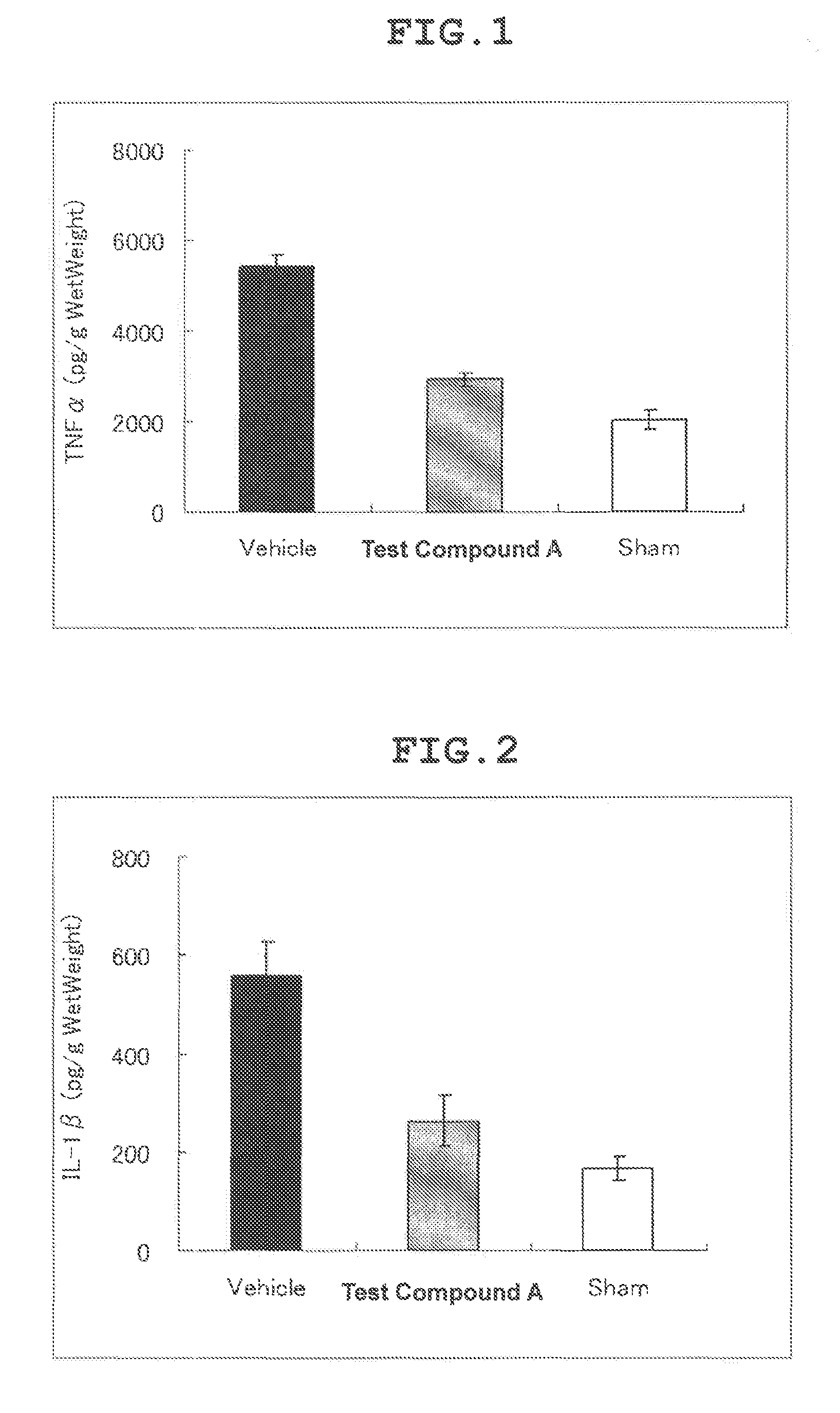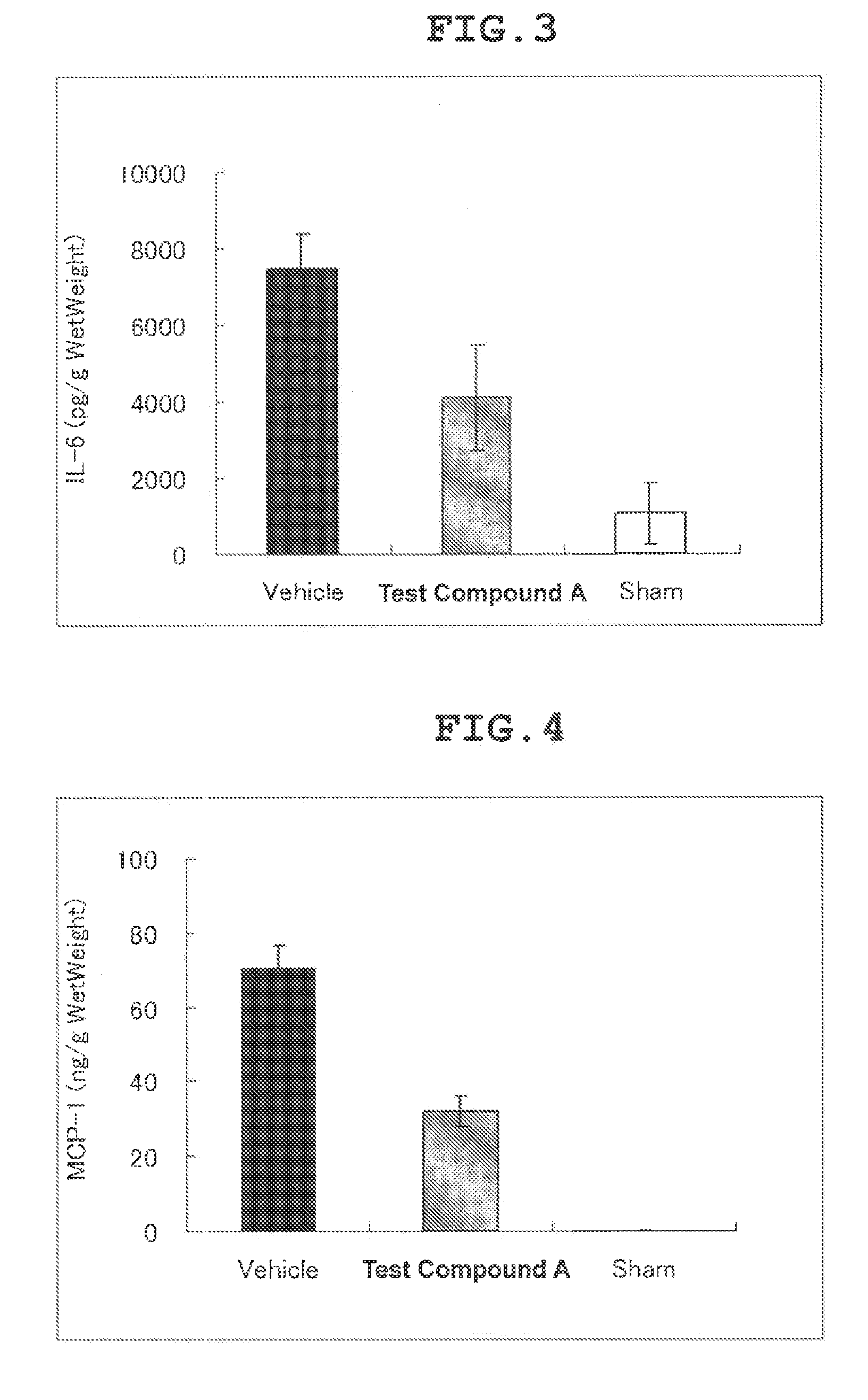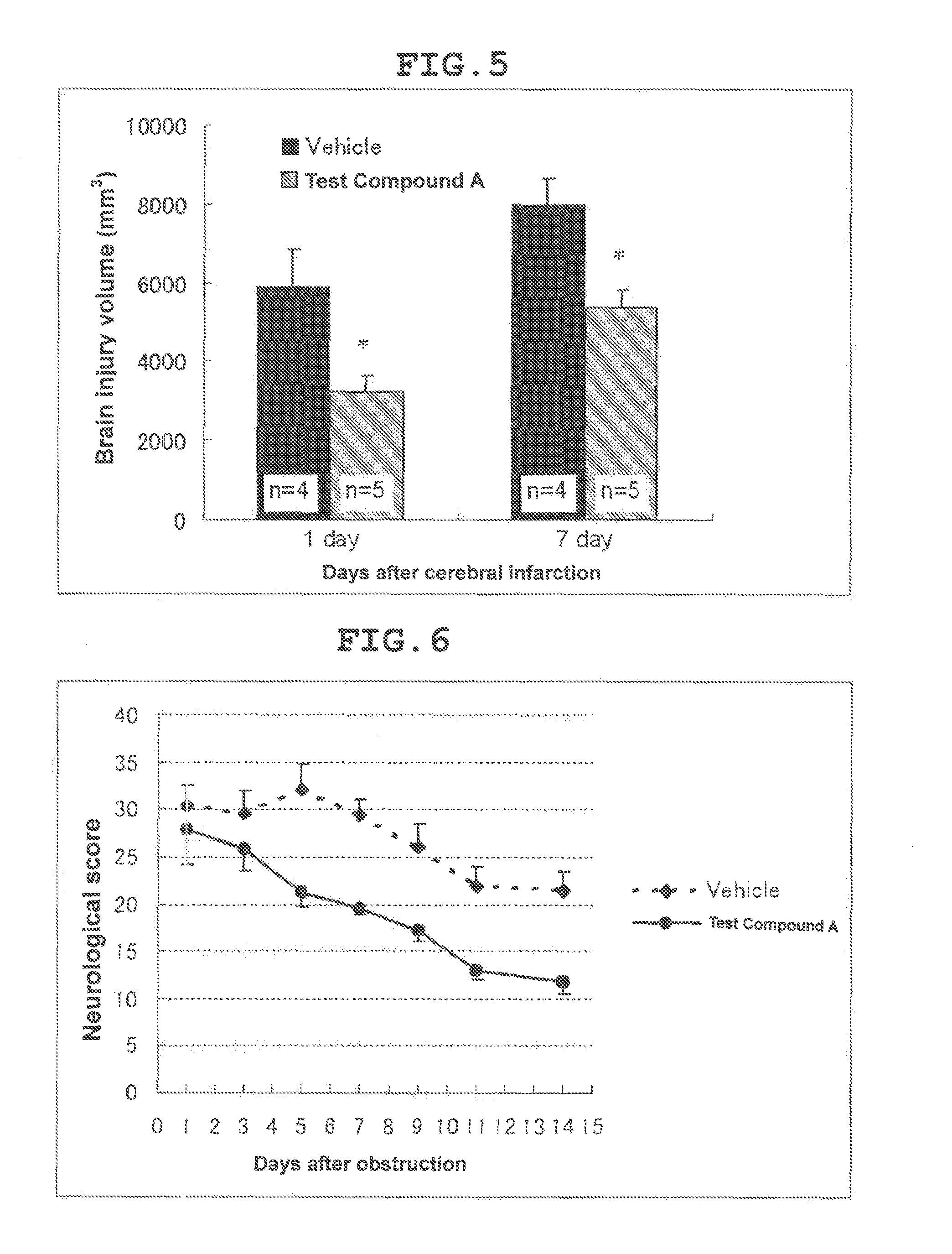Therapeutic agent for cerebral infarction
a technology for cerebral infarction and therapeutic agents, which is applied in the direction of biocide, cardiovascular disorders, drug compositions, etc., can solve the problems of insufficient effect, insufficient il-1 expression, and failure to show clinical effect, so as to reduce brain injury volume, suppress inflammatory cytokines and chemokines, and enhance production
- Summary
- Abstract
- Description
- Claims
- Application Information
AI Technical Summary
Benefits of technology
Problems solved by technology
Method used
Image
Examples
example 1
N-(1-{4-[(3,5-dimethyl-4-pyrimidin-2-ylpiperazin-1-yl)methyl]phenyl}cyclopropyl)acetamide
[0201]
(1) Synthesis of 3,5-dimethylpiperazine-1-carboxylic acid tert-butyl ester
[0202]
[0203]2,6-Dimethylpiperazine (5.71 g) was dissolved in dioxane (150 ml), di-tert-butyl bicarbonate (3.64 g) was added, and the mixture was stirred at room temperature overnight. The solvent was evaporated, water (50 ml) was added to the residue, and the mixture was extracted with dichloromethane (once with 100 ml and once with 50 ml). The extract was washed with saturated brine and dried over anhydrous sodium sulfate, and the solvent was evaporated to give the title compound (3.58 g).
[0204]1H-NMR (CDCl3) δ:1.06 (3H, d, J=6.3 Hz), 1.46 (9H, s), 2.23-2.31 (2H, m), 2.27-2.84 (2H, m), 3.80-4.15 (2H, m).
[0205]MS: 214 (M++1)
(2) Synthesis of 3,5-dimethyl-4-pyrimidin-2-ylpiperazine-1-carboxylic acid tert-butyl ester
[0206]
[0207]3,5-Dimethylpiperazine-1-carboxylic acid tert-butyl ester (1.676 g) and 2-chloropyrimidine (7...
example 2
N-[1-(4-{[(3S)-3-methyl-4-pyrimidin-2-ylpiperazin-1-yl]methyl}phenyl)cyclopropyl]acetamide
[0218]
[0219]Using (3S)-1-tert-butyloxycarbonyl-3-methylpiperazine, reactions similar to those in Example 1 (2), (3) were successively performed to give (3S)-3-methyl-4-pyrimidin-2-ylpiperazine hydrochloride, then reactions similar to those in Example 1 (4) were successively performed to give the title compound (216 mg).
[0220]1H-NMR (CDCl3) δ:1.27-1.38 (7H, d and m, J=6.3 Hz), 2.01 (3H, s), 2.07-2.21 (2H, m), 2.71 (2H, d, J=11.1 Hz), 2.89 (1H, d, J=10.8 Hz), 3.16-3.26 (1H, m), 3.39 (1H, d, J=13.2 Hz), 3.54 (1H, d, J=13.2 Hz), 4.44 (1H, d, J=12.9 Hz), 4.81 (1H, brs), 6.69 (1H, s), 6.43-6.47 (1H, m), 7.09-7.34 (4H, m), 8.30 (1H, d, J=4.8 Hz)
[0221]MS: 366 (M++1)
example 3
N-[1-(4-{[(1S,4S)-5-(pyrimidin-2-yl)-2,5-diazabicyclo[2.2.1]hept-2-yl]methyl}phenyl)cyclopropyl]acetamide
[0222]
[0223]Using (1S,4S)-2,5-diazabicyclo[2.2.1]heptane, reactions similar to those in Example 1 (2), (3) were successively performed to give (1S,4S)-2-pyrimidin-2-yl-2,5-diazabicyclo[2.2.1]heptane hydrochloride, then reactions similar to those in Example 1 (4) were performed to give the title compound (201 mg).
[0224]1H-NMR (DMSO-d6) δ: 1.09 (4H, d, J=2.7 Hz), 1.75 (1H, d, J=9.6 Hz), 1.88 (3H, s), 1.90 (1H, d, J=9.6 Hz), 2.44 (1H, d, J=9.6 Hz), 2.83 (1H, dd, J=2.1 Hz, 9.6 Hz), 3.56 (1H, d, J=18.6 Hz), 3.63 (2H, s), 4.71 (1H, s), 6.58 (1H, t, J=5.1 Hz), 7.04 (2H, d, J=8.4 Hz), 7.19 (2H, d, J=8.4 Hz), 8.31 (2H, d, J=4.8 Hz), 8.51 (1H, s).
[0225]MS: 364 (M++1)
PUM
| Property | Measurement | Unit |
|---|---|---|
| carbon number | aaaaa | aaaaa |
| carbon number | aaaaa | aaaaa |
| temperature | aaaaa | aaaaa |
Abstract
Description
Claims
Application Information
 Login to View More
Login to View More - R&D
- Intellectual Property
- Life Sciences
- Materials
- Tech Scout
- Unparalleled Data Quality
- Higher Quality Content
- 60% Fewer Hallucinations
Browse by: Latest US Patents, China's latest patents, Technical Efficacy Thesaurus, Application Domain, Technology Topic, Popular Technical Reports.
© 2025 PatSnap. All rights reserved.Legal|Privacy policy|Modern Slavery Act Transparency Statement|Sitemap|About US| Contact US: help@patsnap.com



